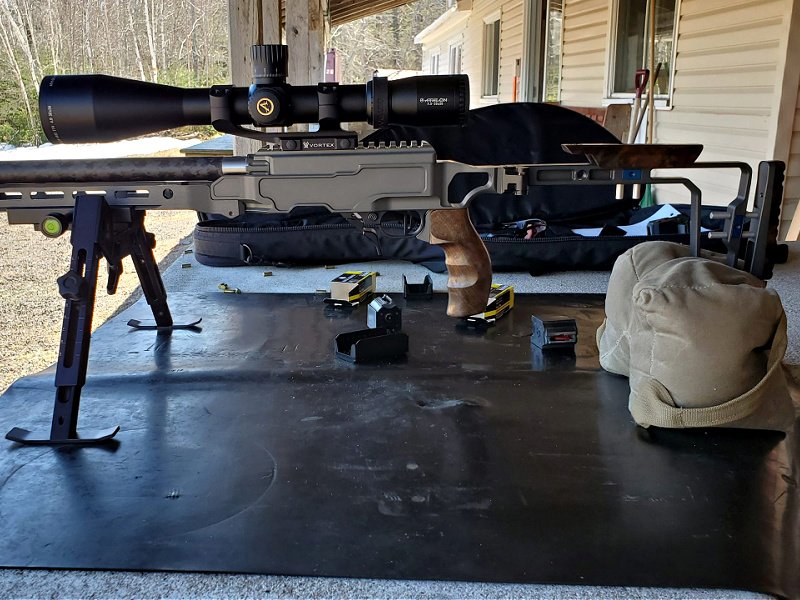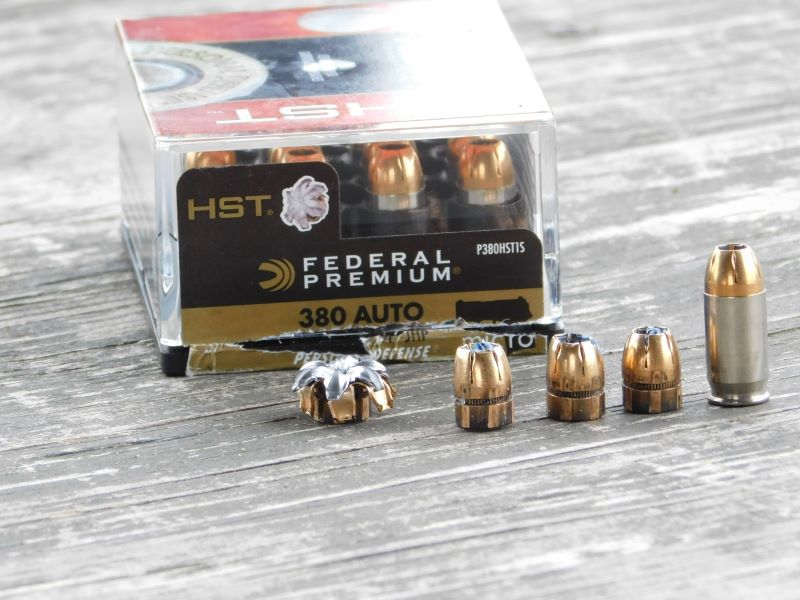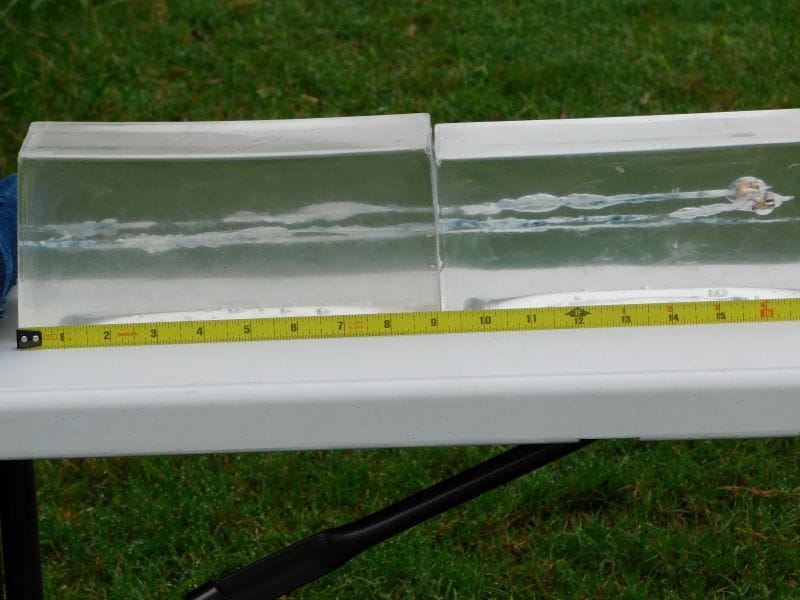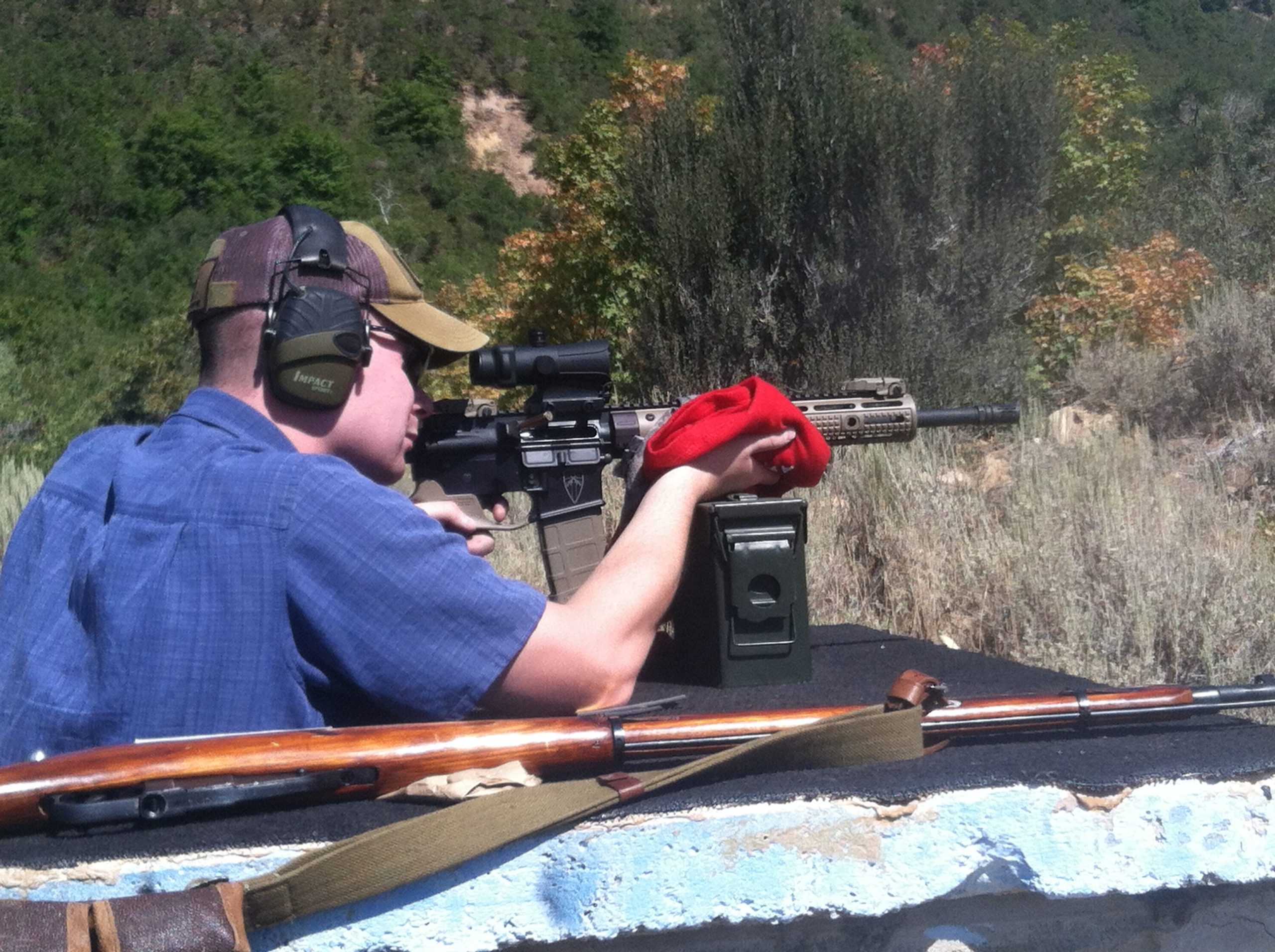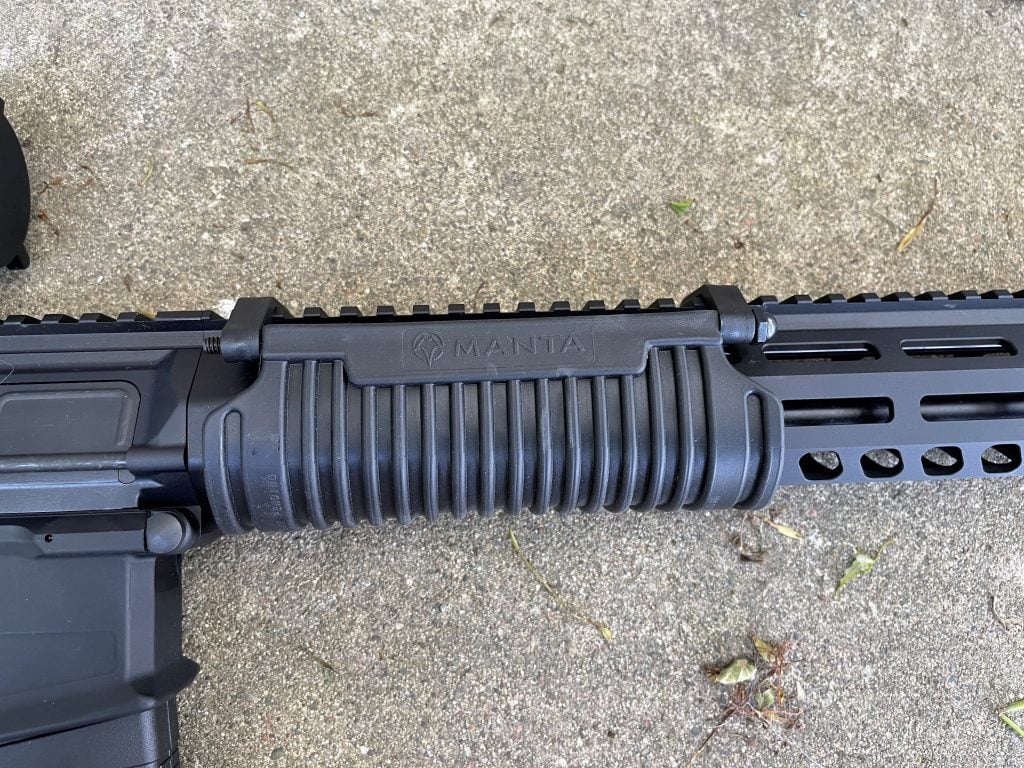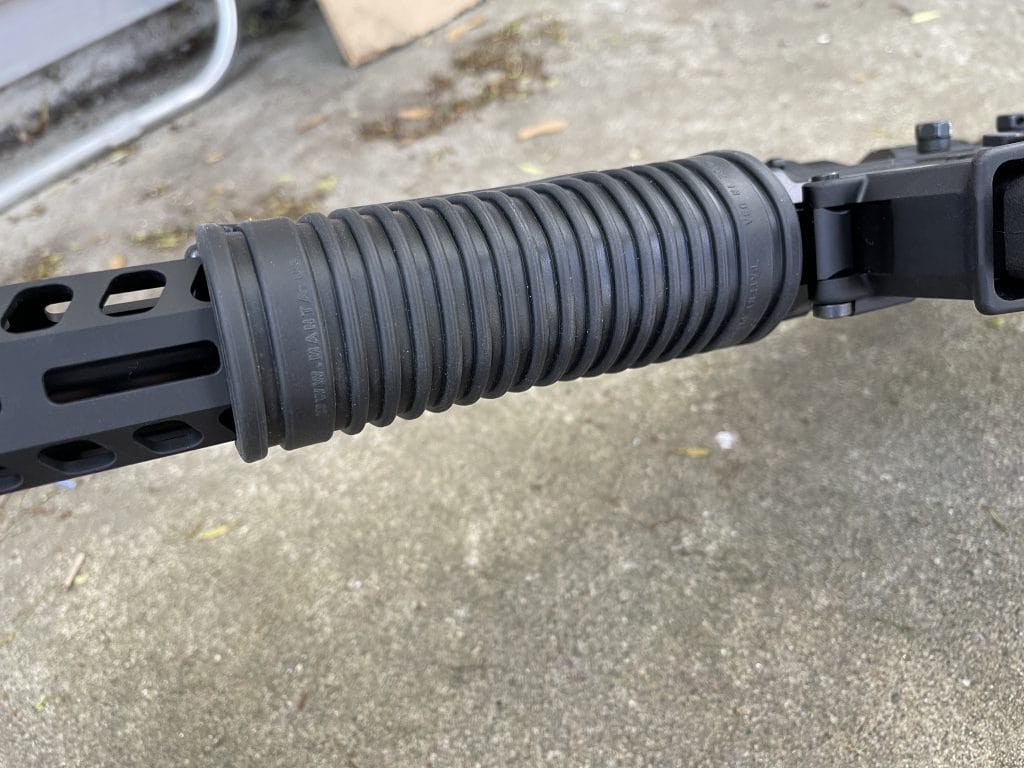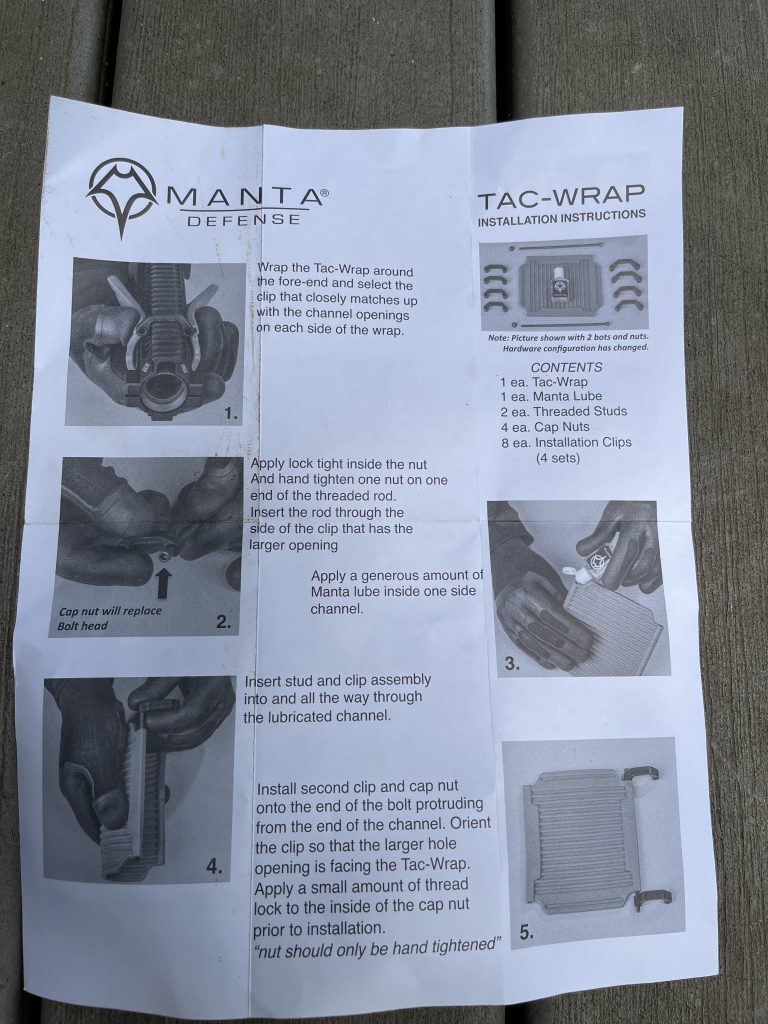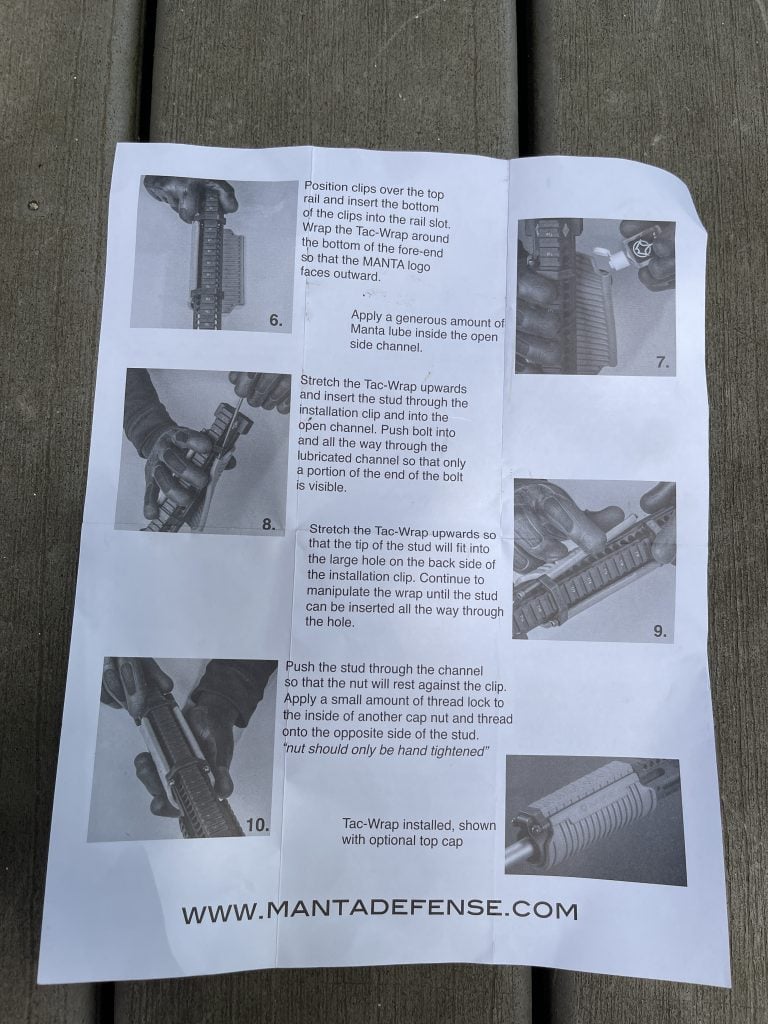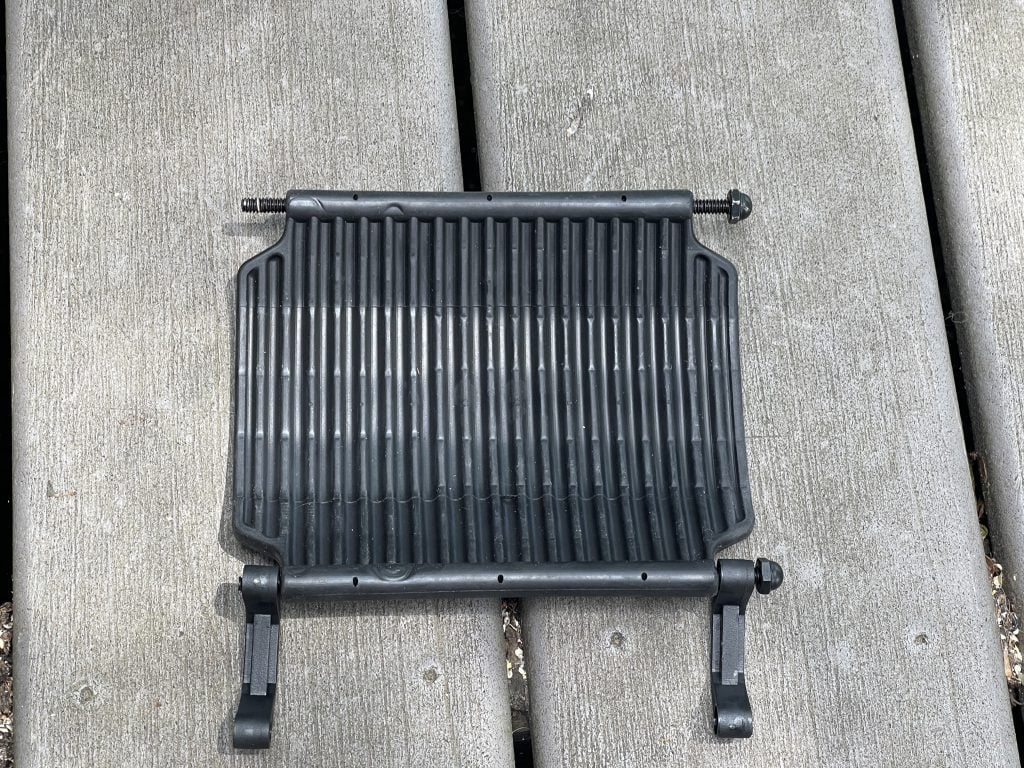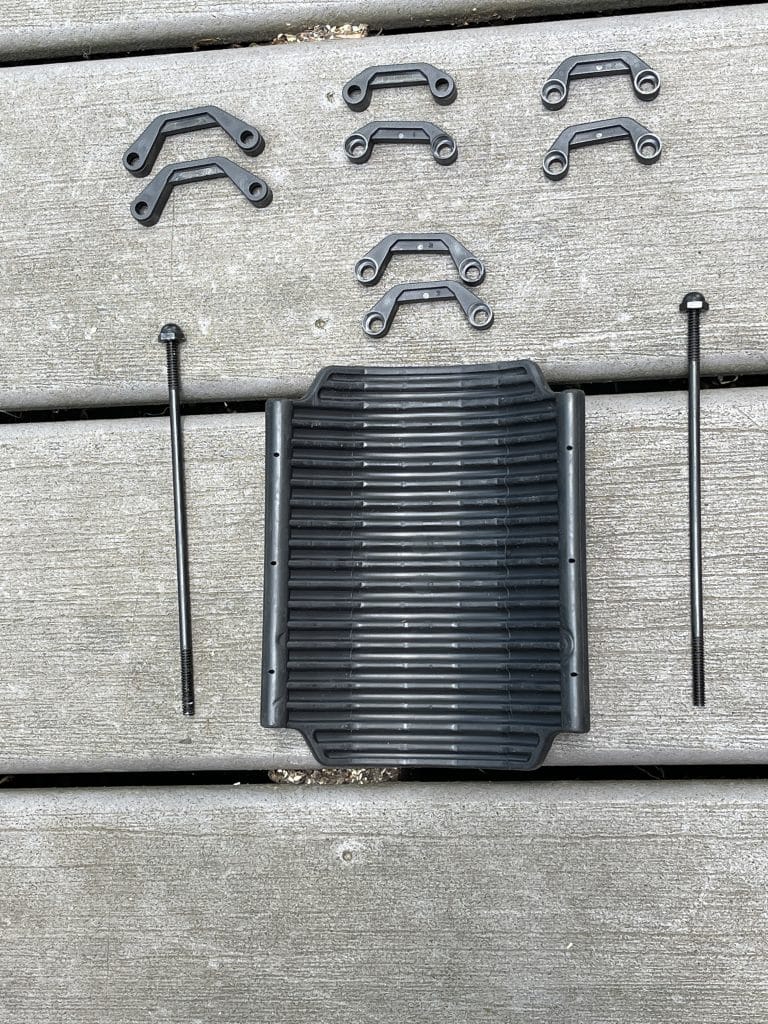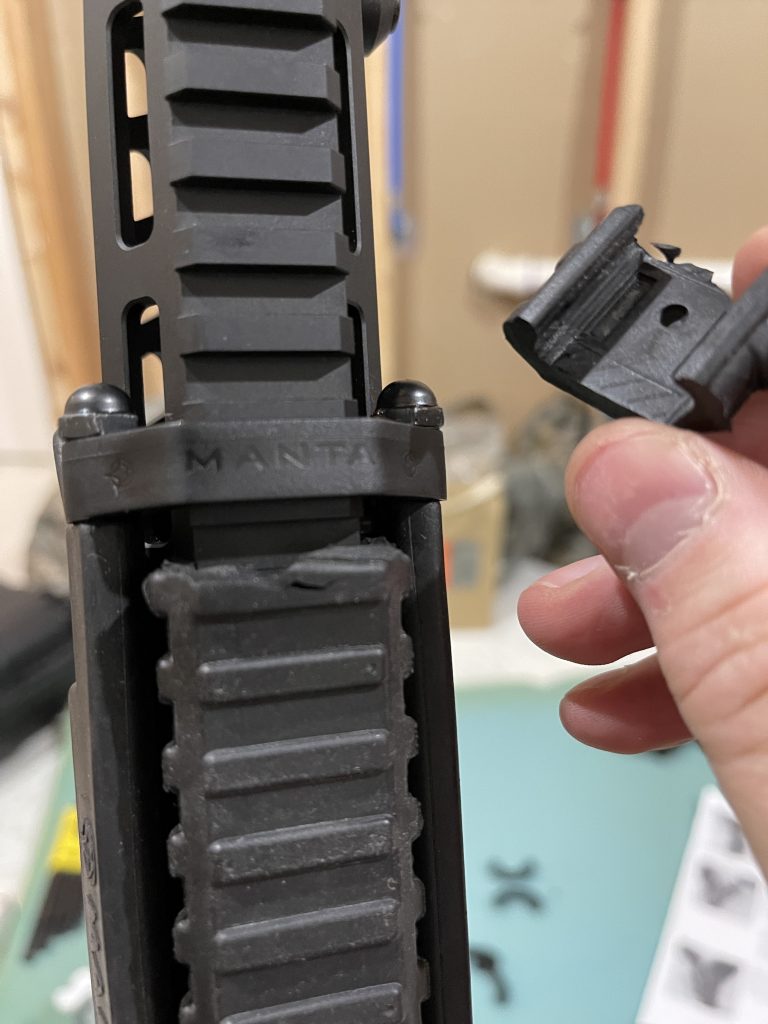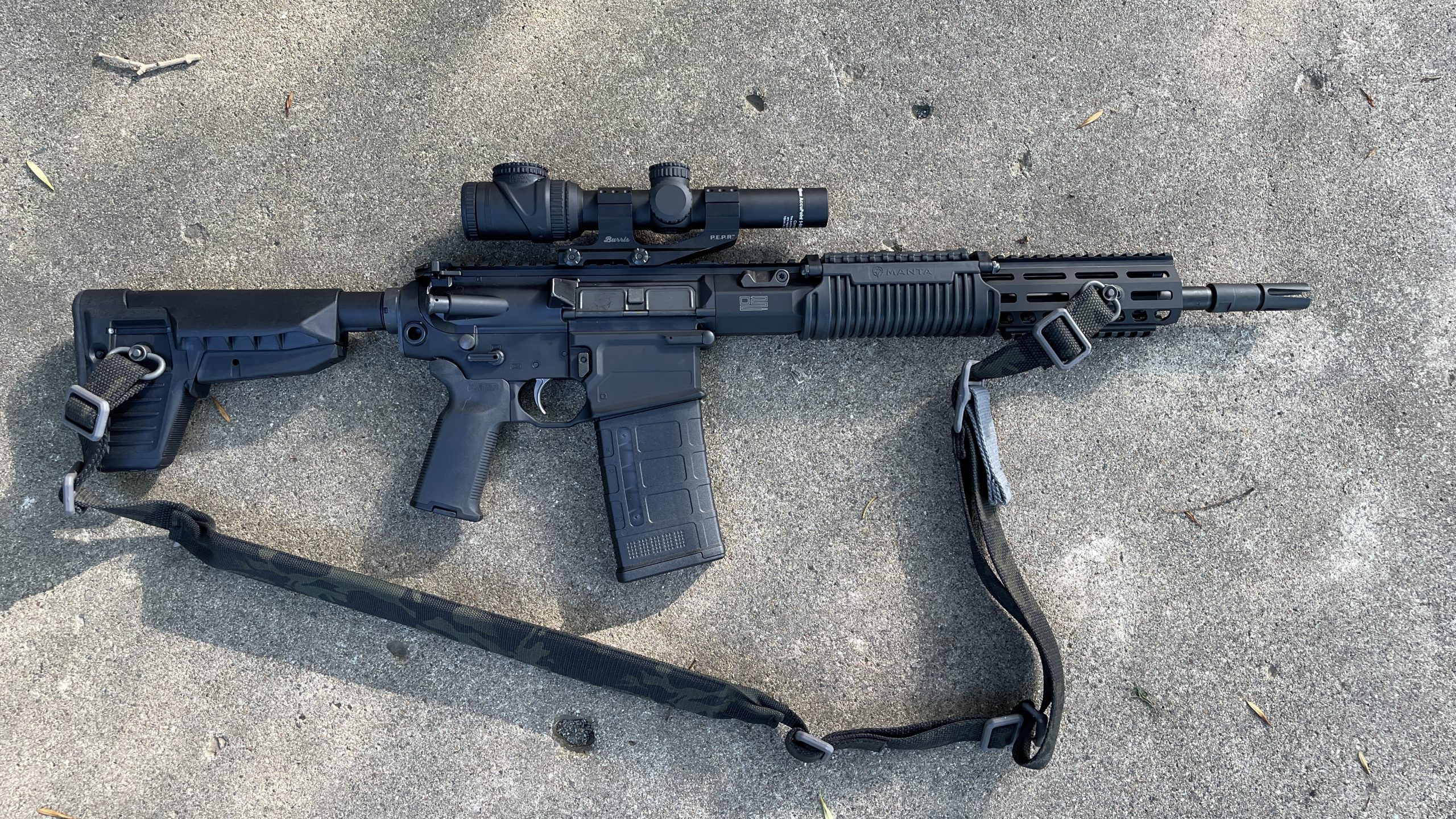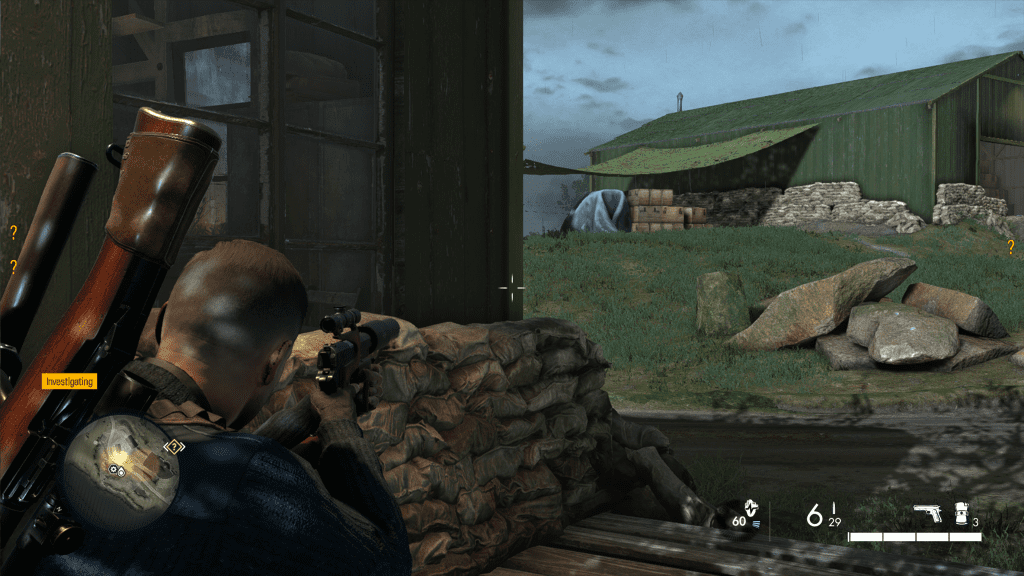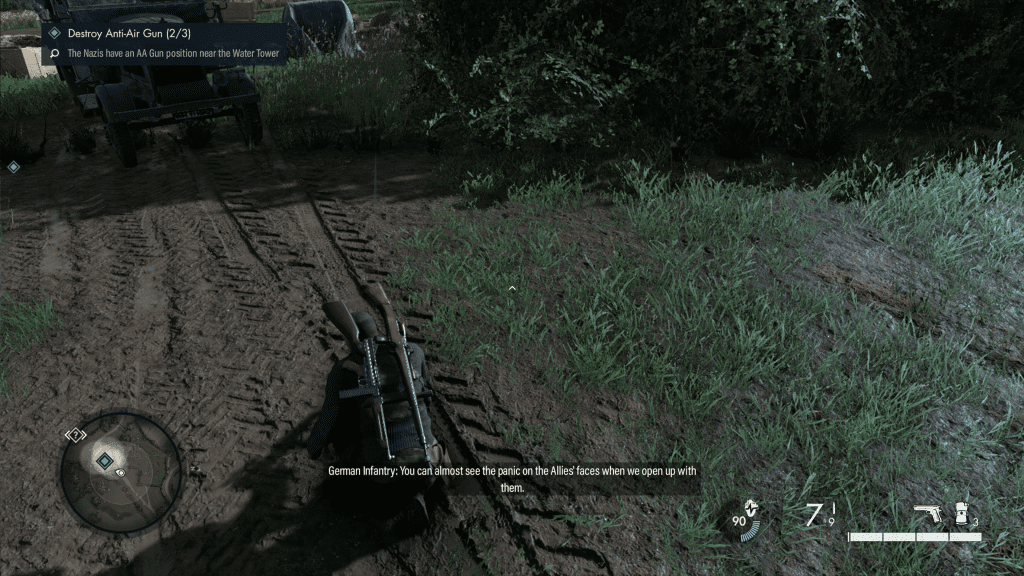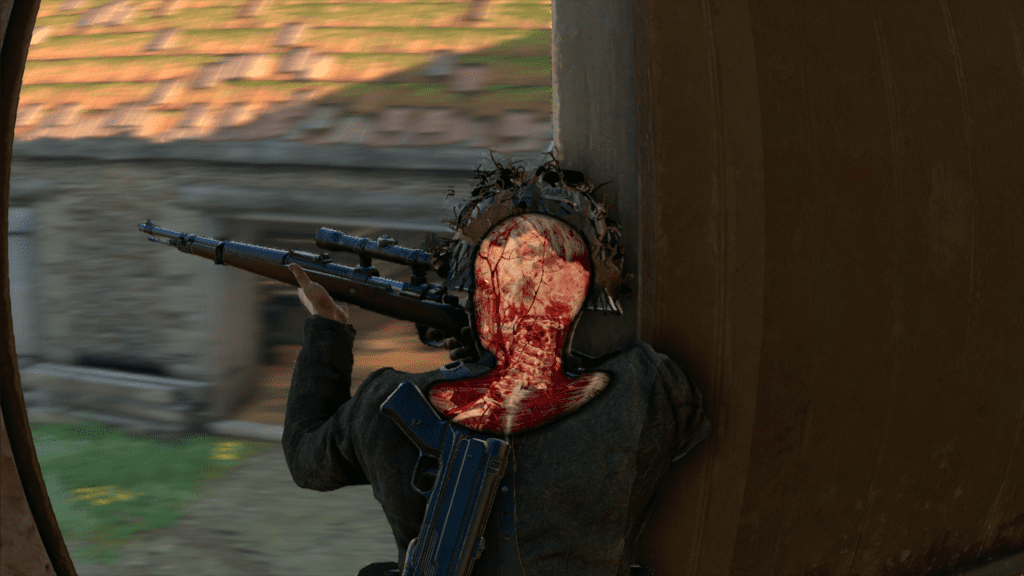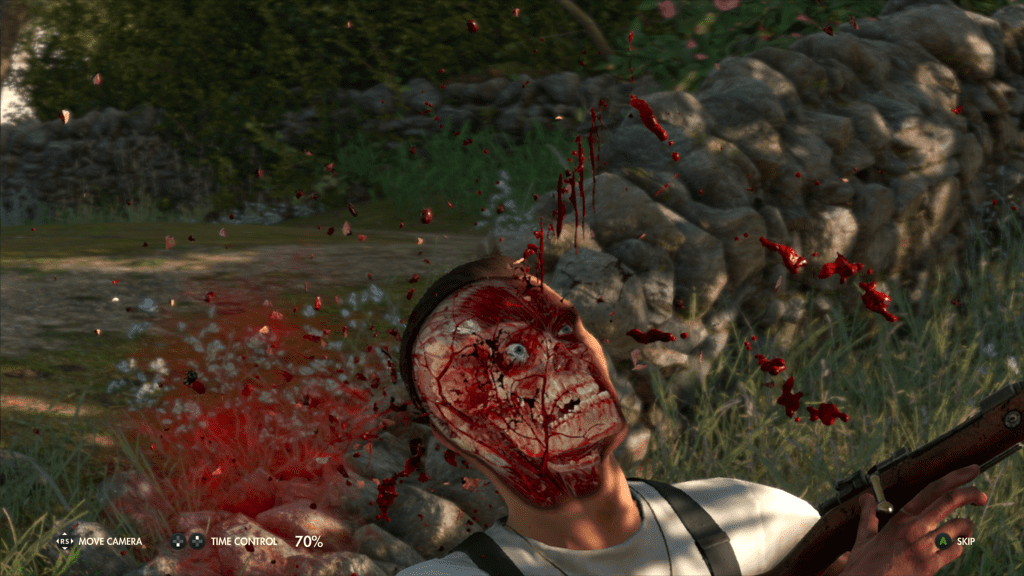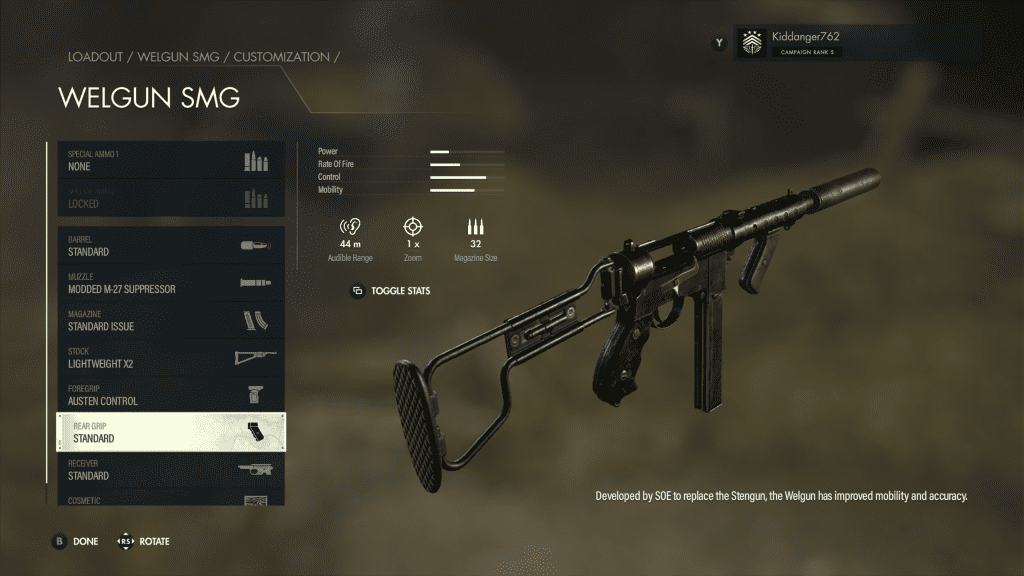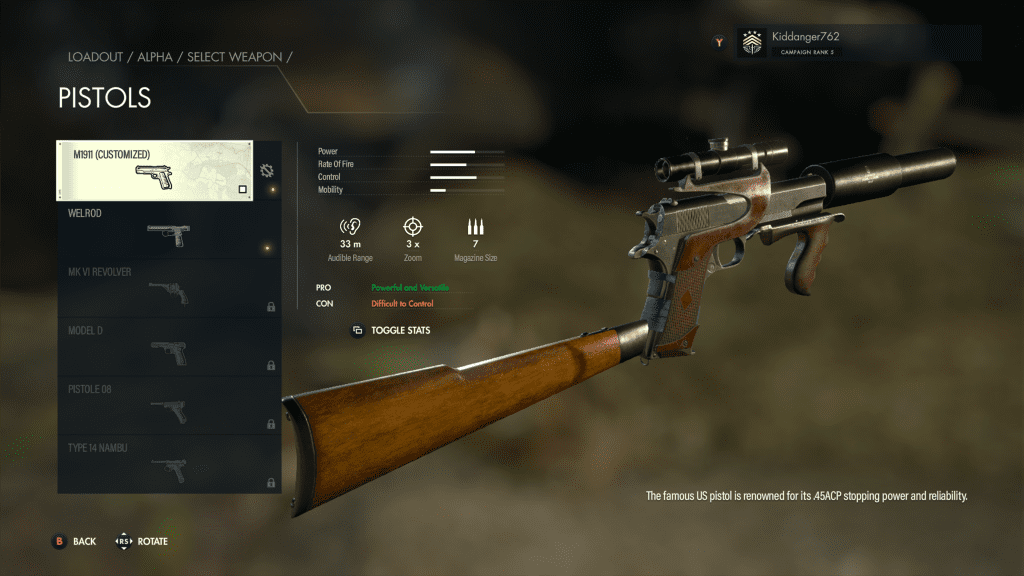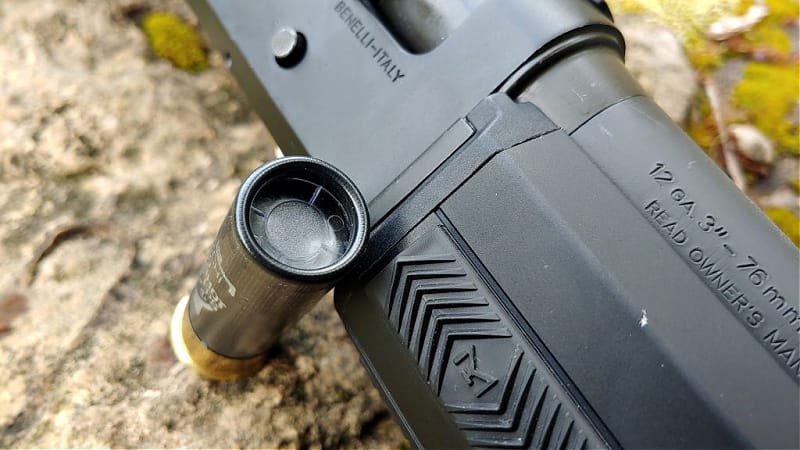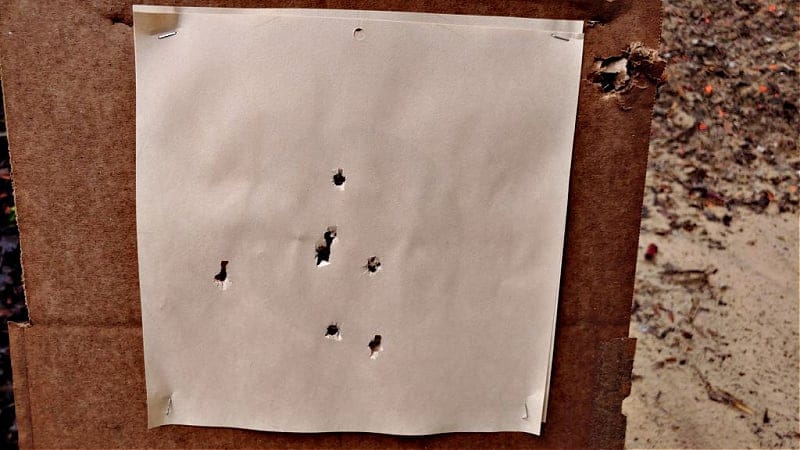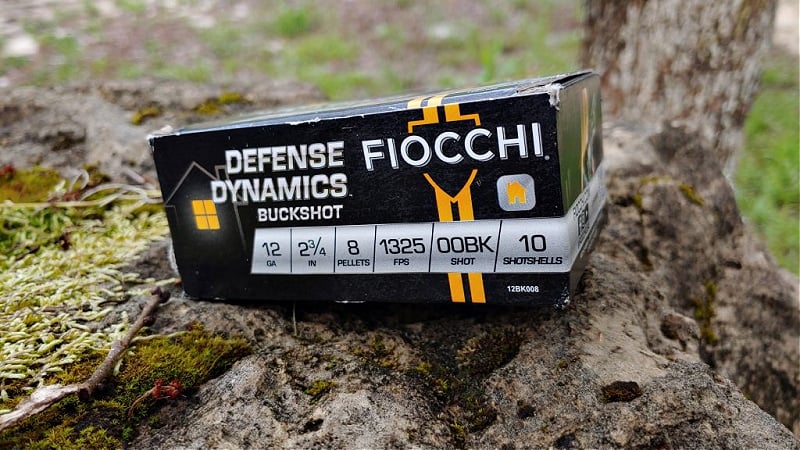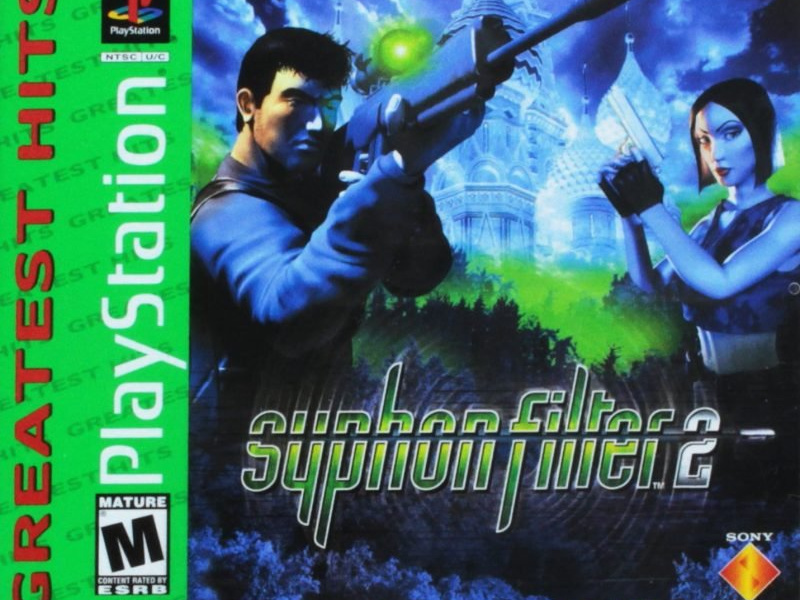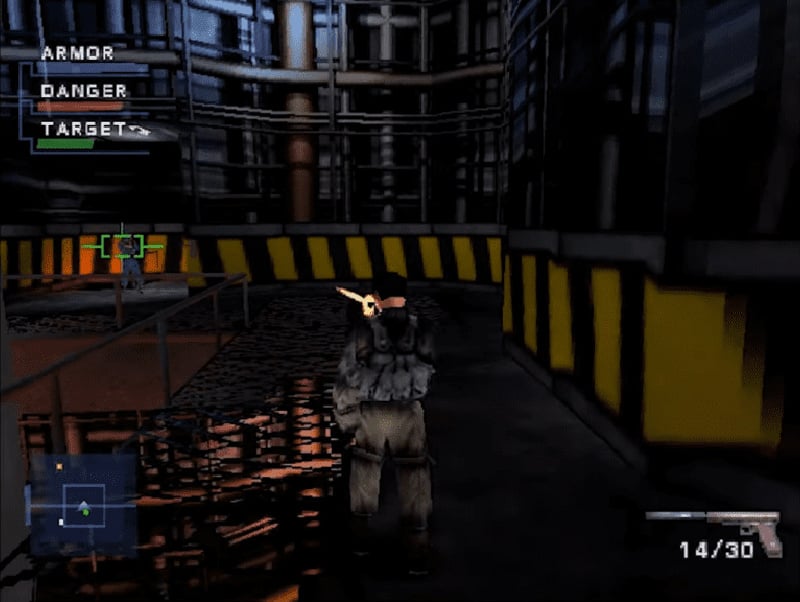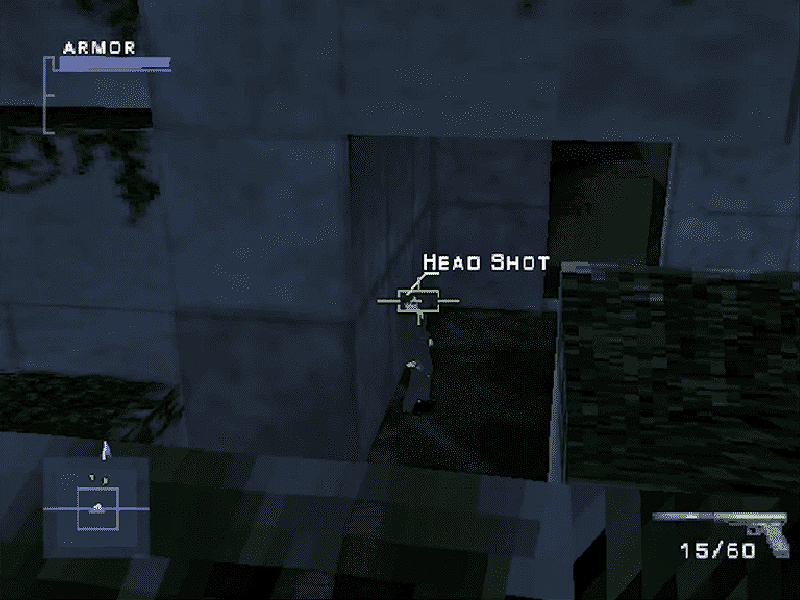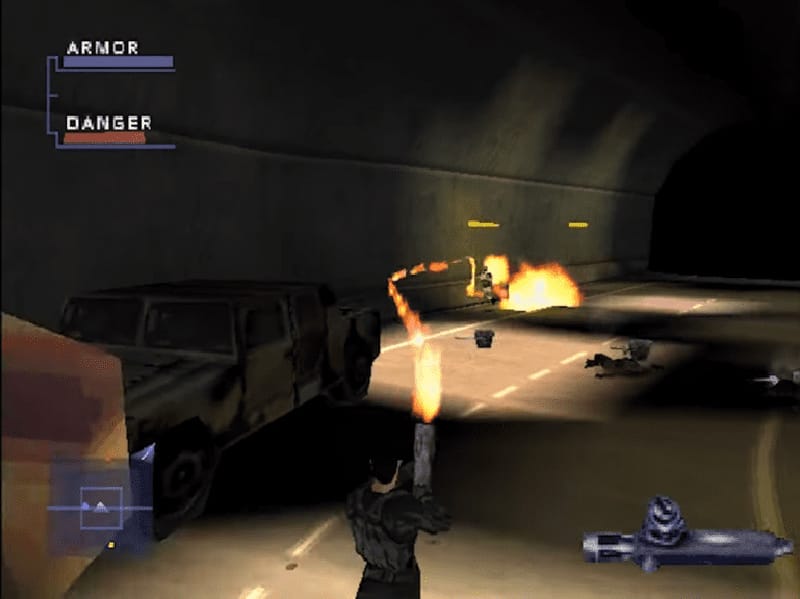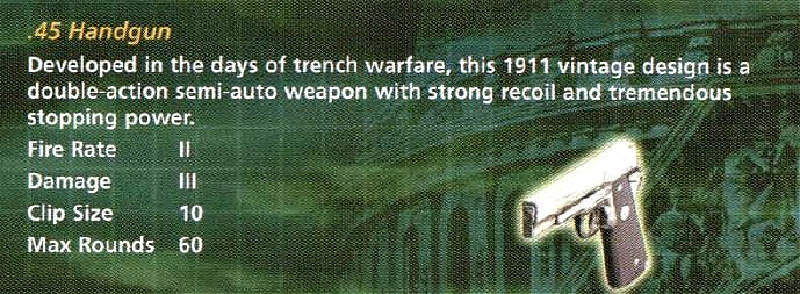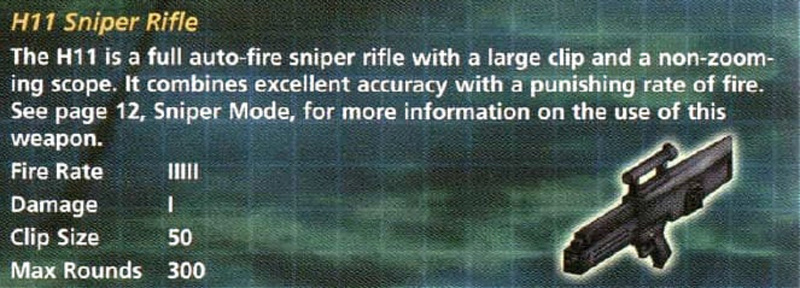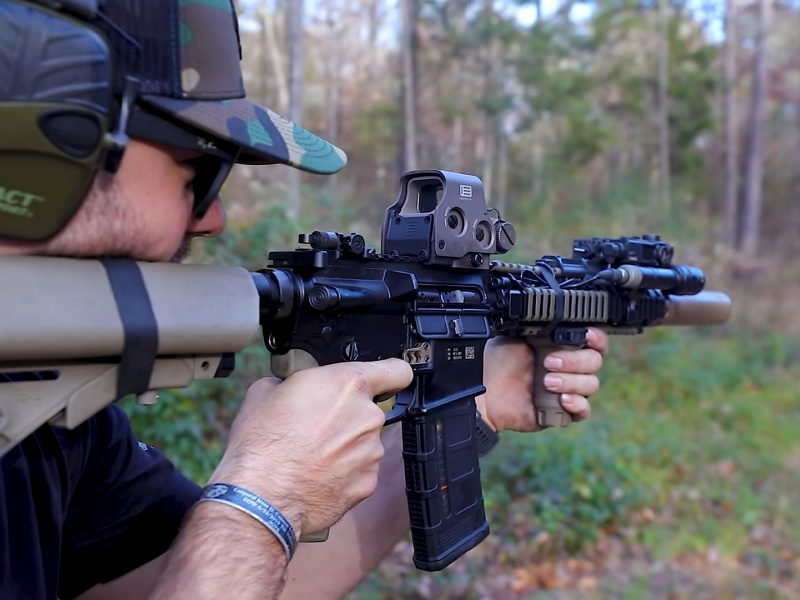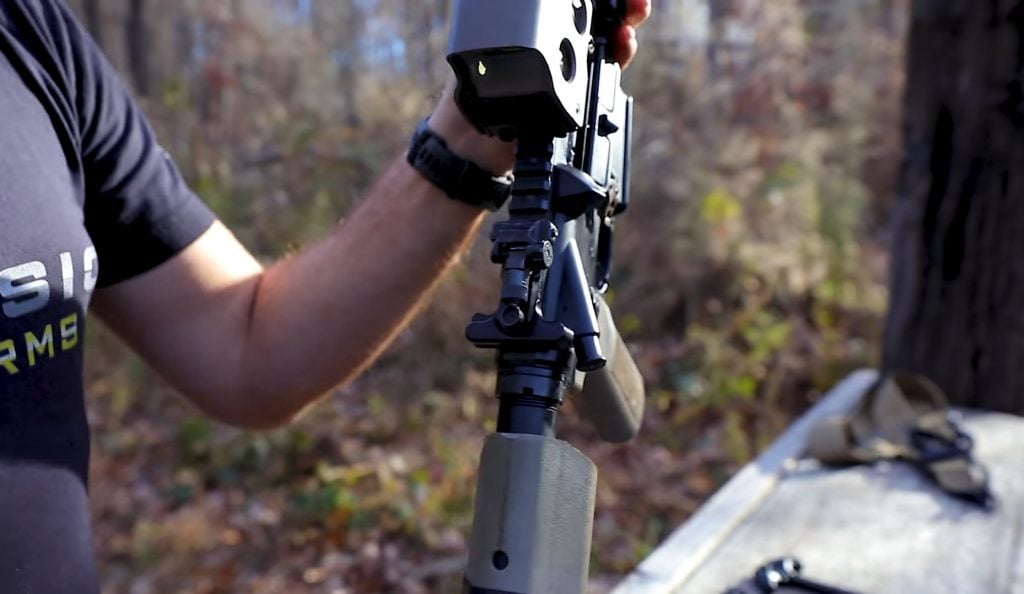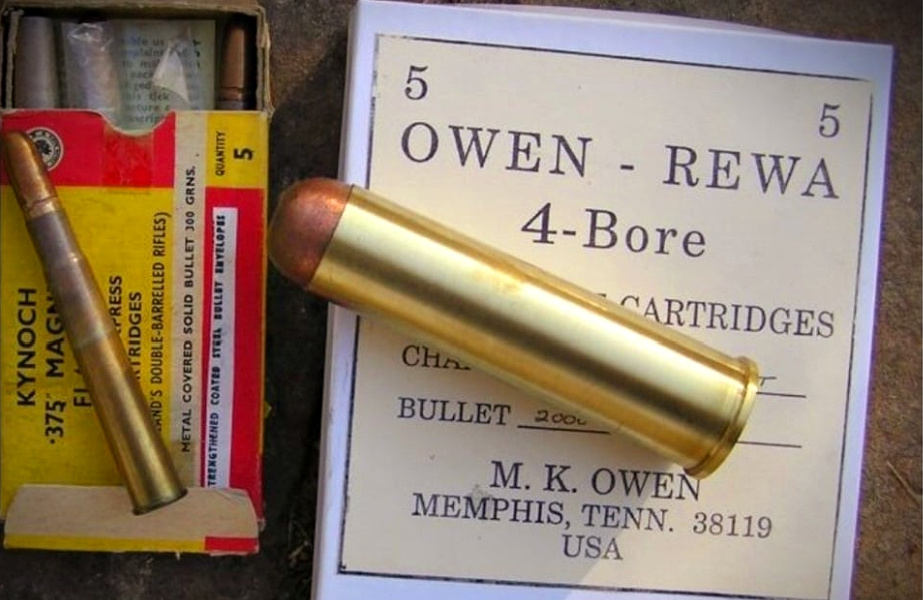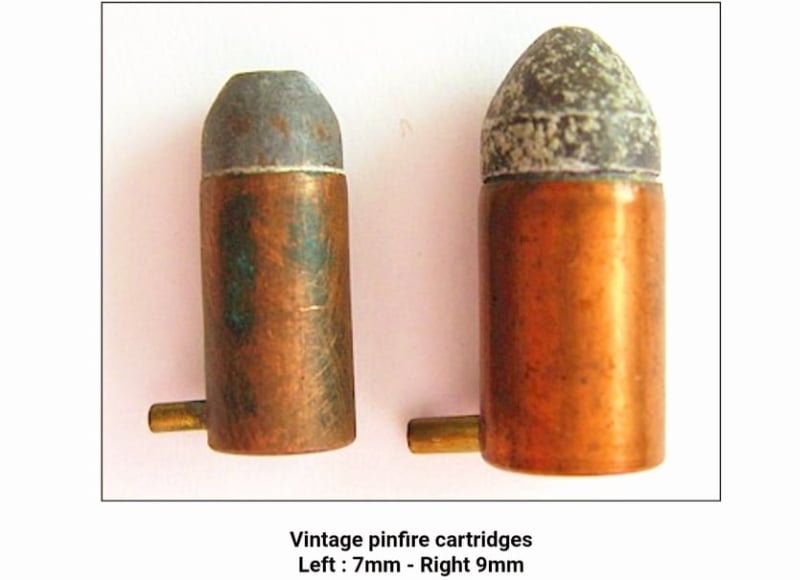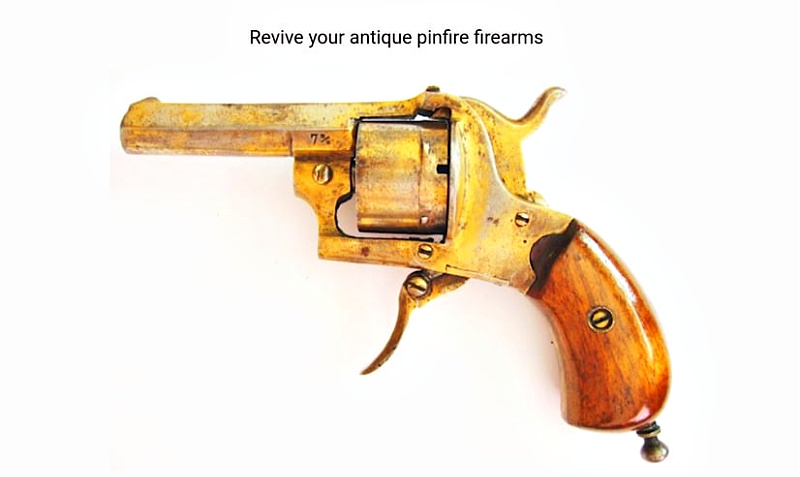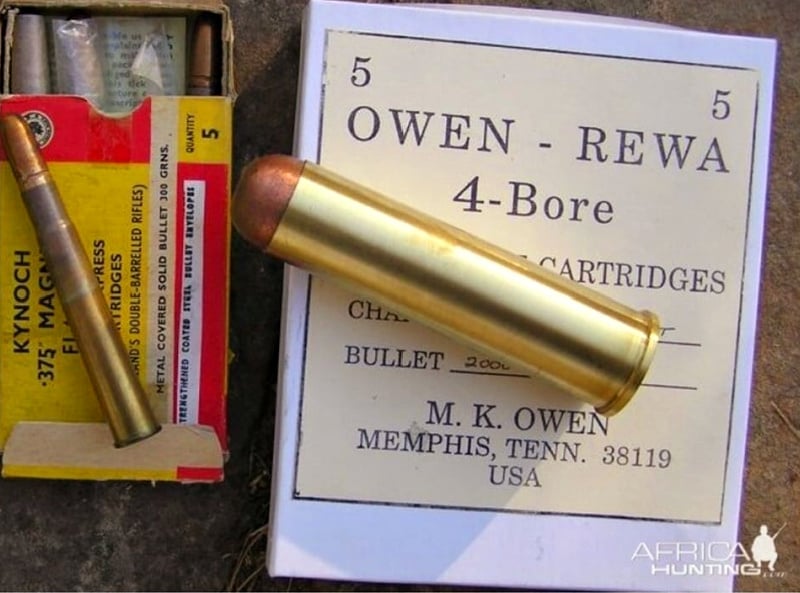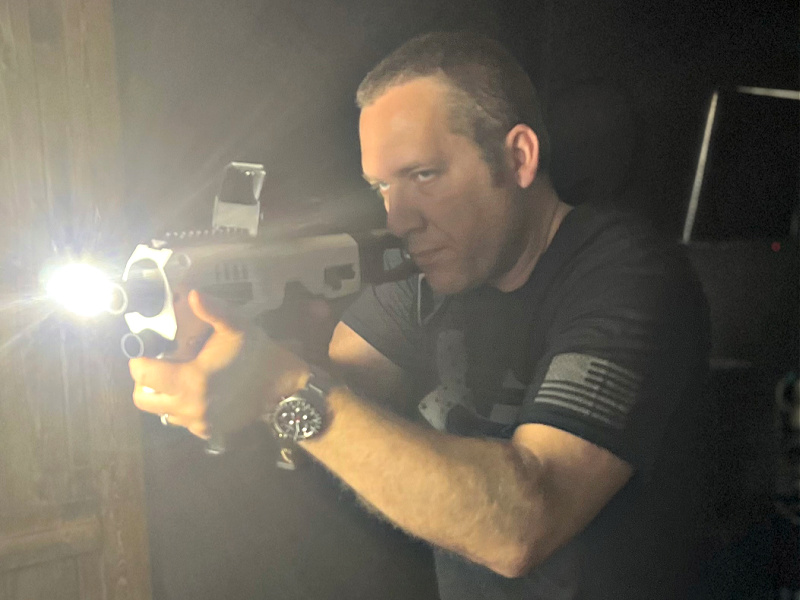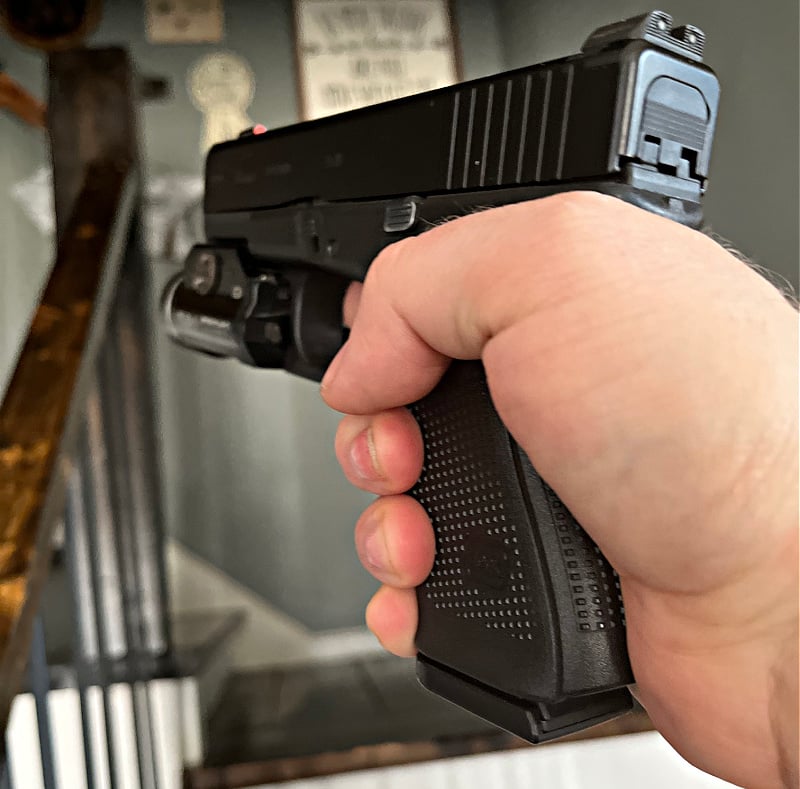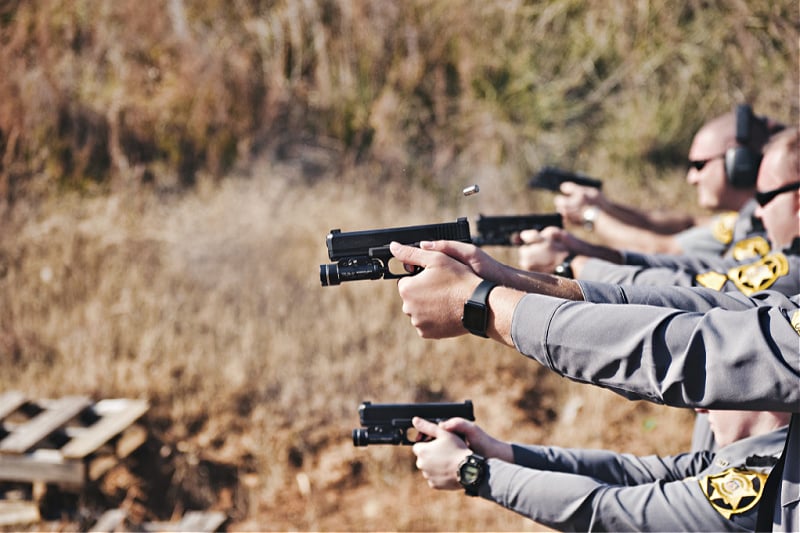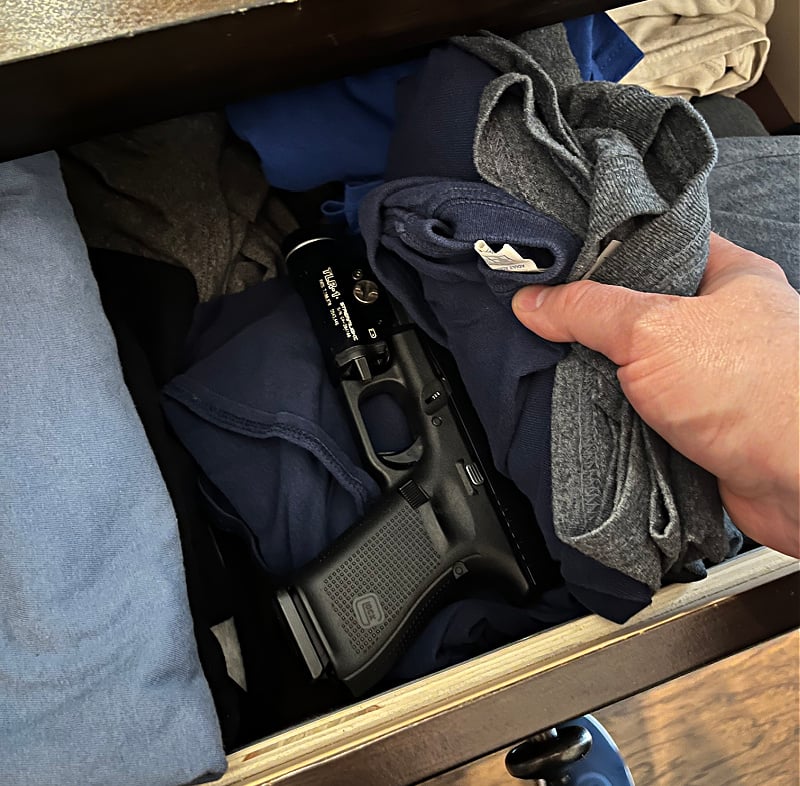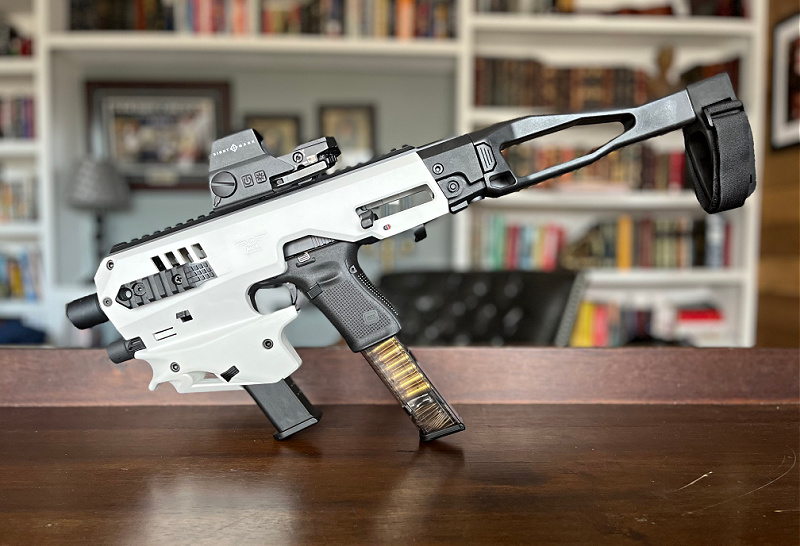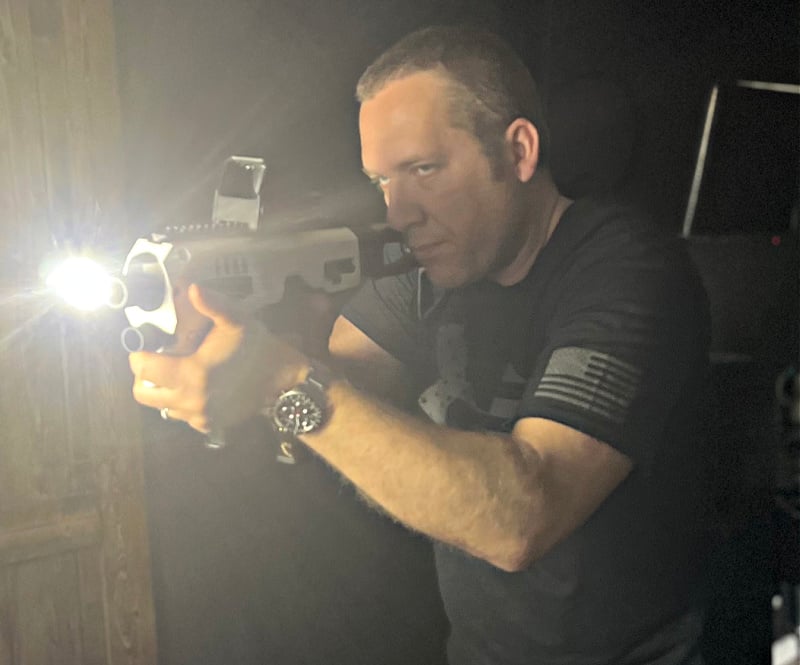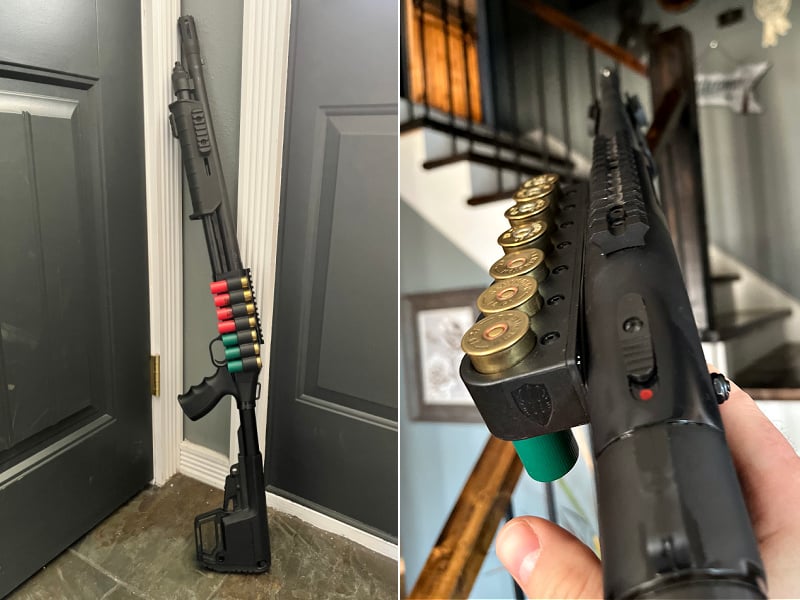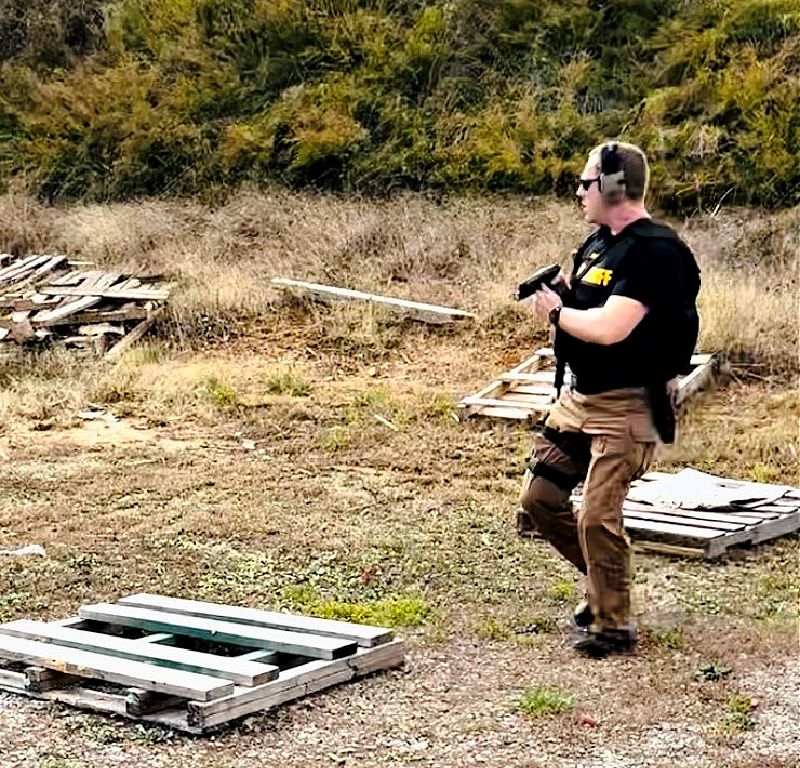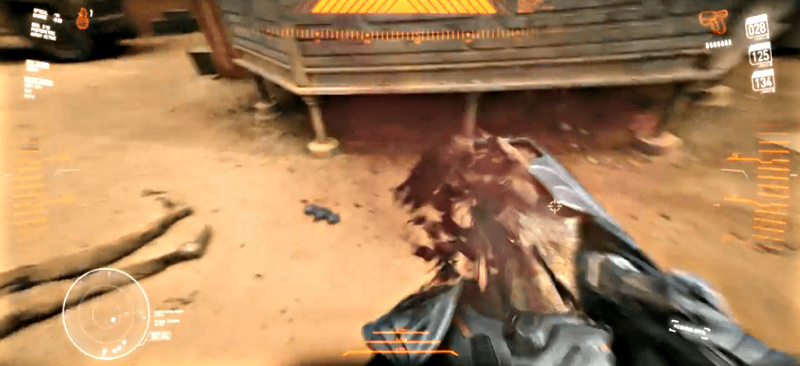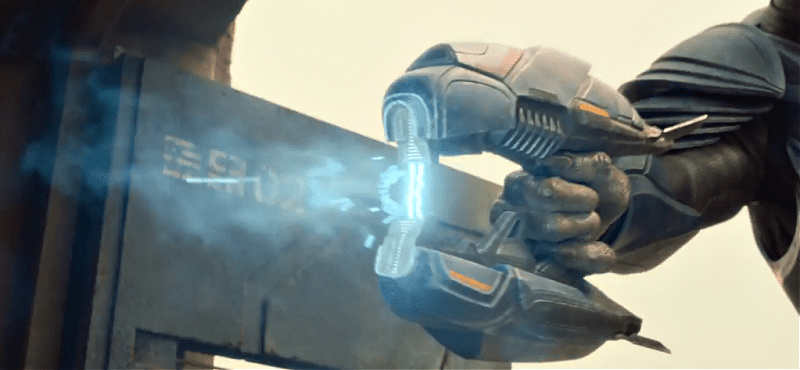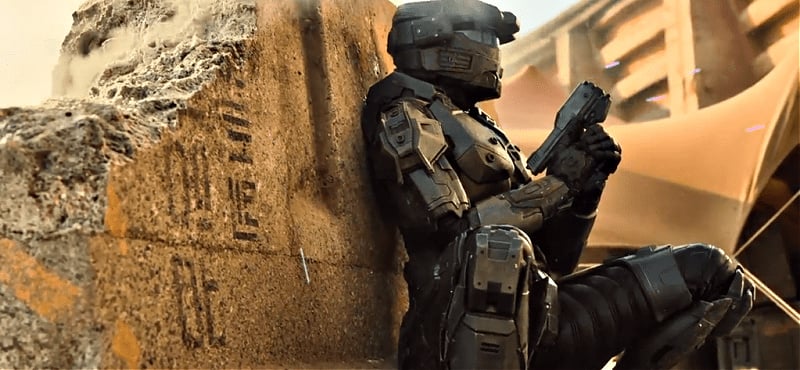Grey Birch Manufacturing — Fusion Receiver and Barrel
Anyone who has owned a 10/22 and changed parts on it has likely had to deal with the V-Block. This was an easy method to attach barrels to the Ruger 10/22 receiver but is finicky and doesn’t lead to the ultimate accuracy you can achieve. Grey Birch Manufacturing said hell no with that garbage and decided to do what the big bore rifles do and have a threaded barrel and barrel nut.
We had previously talked about the LaChassis as it is called now and it had the V-Block version of their barrel and receiver in it. They have since discontinued these items despite the great accuracy we had on our sample. Now they only offer what they call the Fusion LDR in both a 16.1″ carbon fiber wrapped barrel or fatty steel barrel. We picked up the carbon fiber version and got to check out their new bolt at the same time.
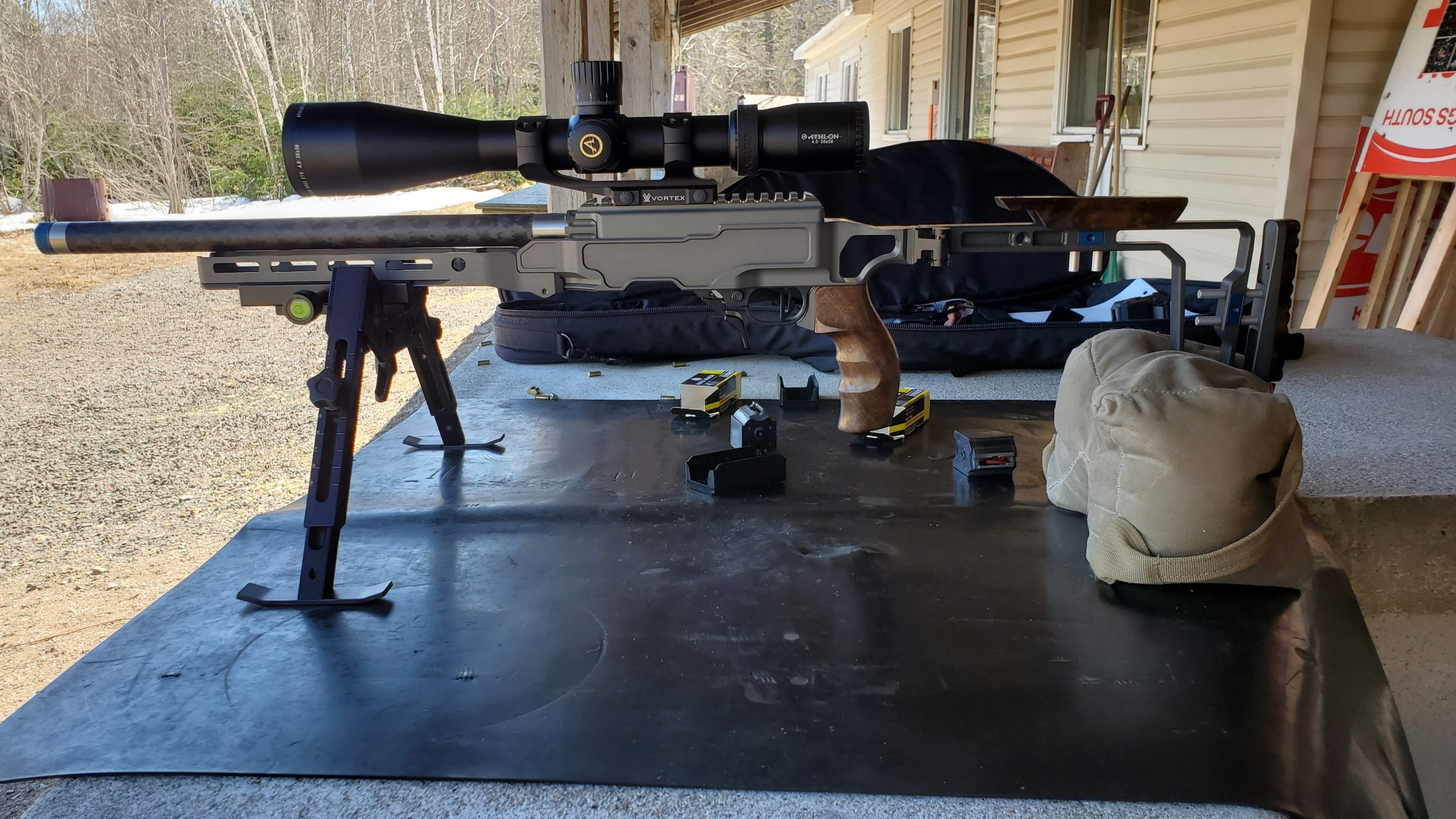
Precision Bolt
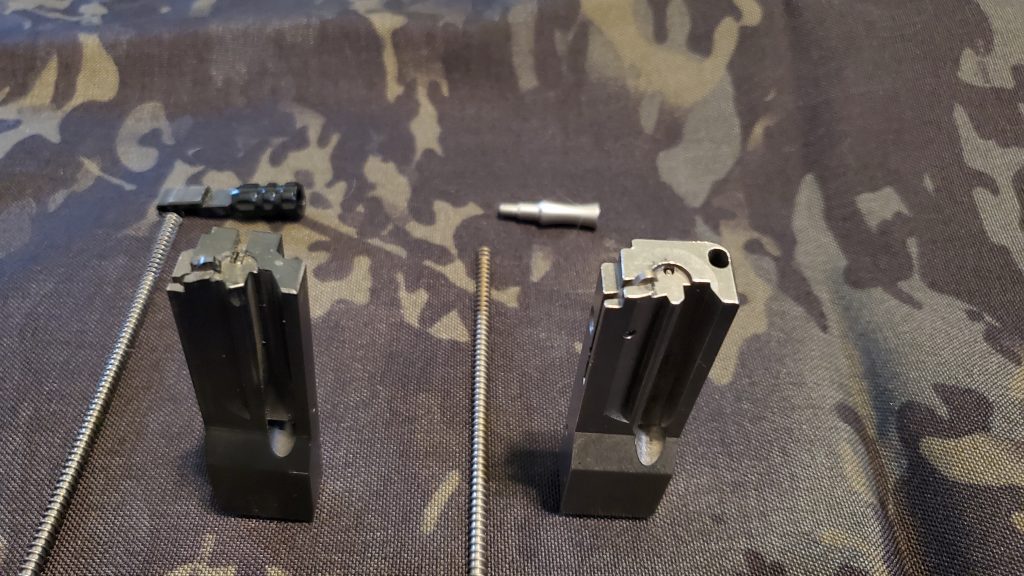
We will start off by talking about the new bolt since this removed my main frustration with assembling a 10/22—getting the bolt and cocking handle assembly into the receiver. I find this process overly complicated for what it needs to be. Some people have mastered the cheat code for installing these, but not this guy.
The Grey Birch Manufacturing Precision Bolt simplifies this by attaching the cocking handle to the bolt itself. On a normal Ruger bolt, you have to slot the cocking handle into the top of the bolt with a delicate balancing act. To install this bolt you just unscrew the cocking handle and put the spring guide rod and recoil spring into the corresponding hole in the bolt. Then all you have to do is push back and tilt in. I did this with two rifles as you can see in the picture and the Precision Bolt was infinitely easier to install. The extractor and firing pin are also much cleaner parts than what you get with Ruger.
I did have one issue with this bolt compared to a stock Ruger one and that was a Timney 10/22 trigger that caused a load of light strikes. After doing some research, a lot of people have talked about how the trigger has light strikes, so the Timney trigger seems to have a weak hammer spring. So instead, I did what I had planned to do for a long time—get a bunch of Tandemkross parts into a Ruger BX trigger pack. I tested with both a stock BX trigger and the upgraded one and both had proper strikes every time. I like this bolt so much that I will be buying one for my wife’s 10/22 due to how easy it is to remove and install.
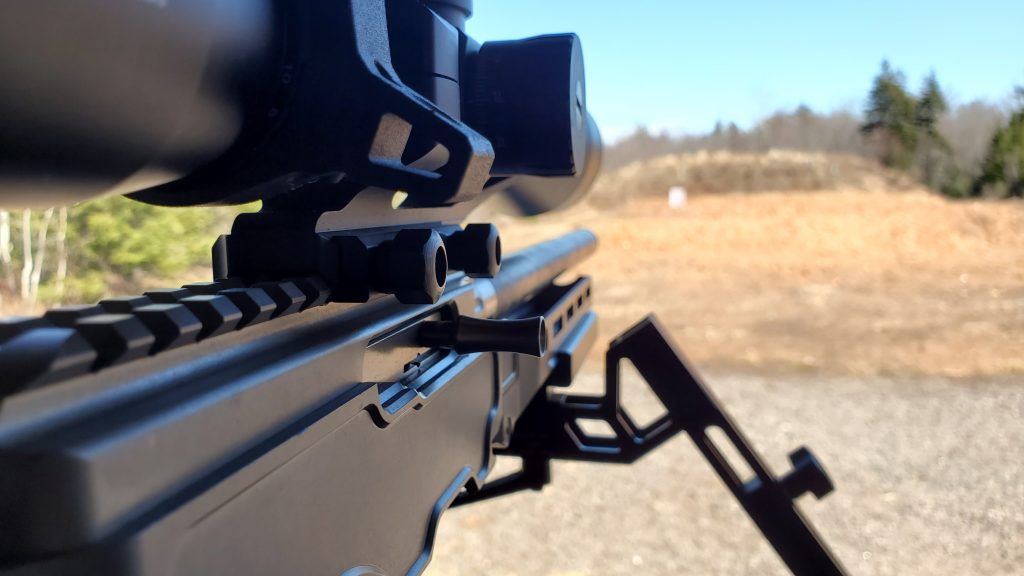
Fusion System
Now that we have talked about the new bolt it is time to get into the hotness that is the Fusion System. The Fusion Systems barrel nut means that your barrel can be consistently torqued on giving consistent results. The only thing is you would need to make sure is the extractor slot is timed right. The Fusion System does come with the barrel factory installed into the LDR receiver and with 22lr it will take a long time to shoot out the barrel.
There is a small but easily remedied issue with the barrel nut. Most stocks are not designed with the added girth in this area of the barrel so minimal work with a file or sandpaper is needed to relieve this area. If you buy a current model of the LaChassis it comes with this area set up for the barrel nut.
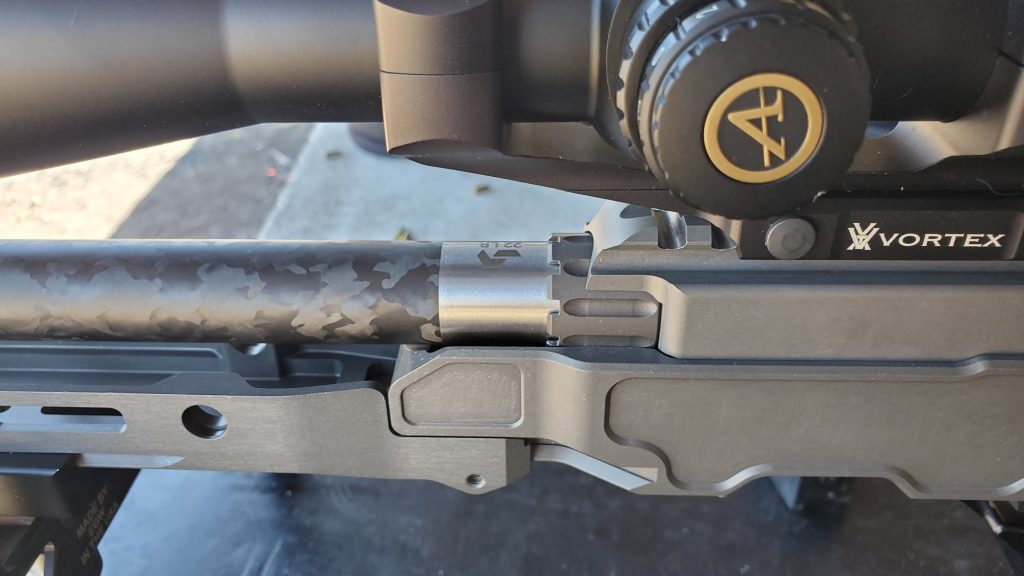
Rail
The rail on the top of the rifle is a 20 moa rail giving you some extra elevation in your scope. This is much needed when shooting 22lr at range due to the heavy drop of the slow-moving chunk of lead. The receiver itself is made from 6061 T6 aluminum and anyone who has worked with 7000 series aluminum can understand why (ask me how I know). The receiver has a clear hard anodized finish which has held up well so far and gives the rifle a unique look showing off the tumbled aluminum below.
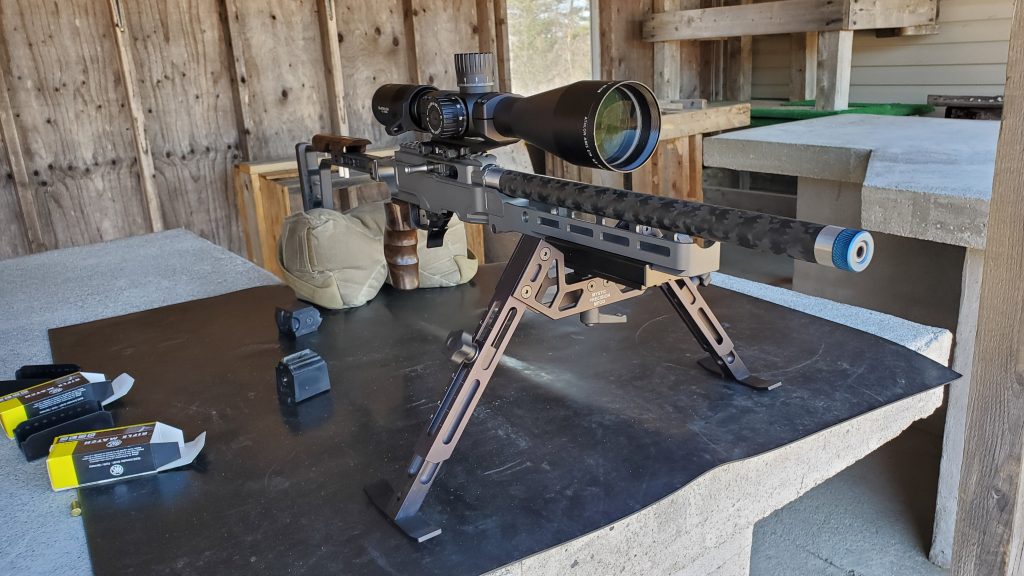
Barrel
The barrel comes with an anodized blue thread protector and is made from well-machined carbon fiber and 416 stainless steel. The chamber of the barrel is a Bentz chamber made for match ammo and we can certainly say this rifle makes some nice small holes.
I recently took the rifle to the range and forgot to bring a bipod. So I said screw it, I will shoot off the Game Changer bag. I had several types of ammo with me and at 50 yards the Remington Target Rifle made by Eley shot a single-hole group. The next two best consistent five-shot groups came from the RWS Rifle Match along with the SK Standard Plus. Both of these were easily making .300″ groups when the wind picked up a bit so likely on a bipod in calmer conditions this could be dropped further.
Of the five different types of ammo I shot, each was used for a five-shot group five separate times to rule out trigger mistakes. The rifle performed pretty well with CCI Standard Velocity but it was obvious the Bentz chamber preferred match rounds. Currently, we have shot just under 600 rounds of 22lr through this rifle and will update this article later if anything changes or we find a better round for the rifle.
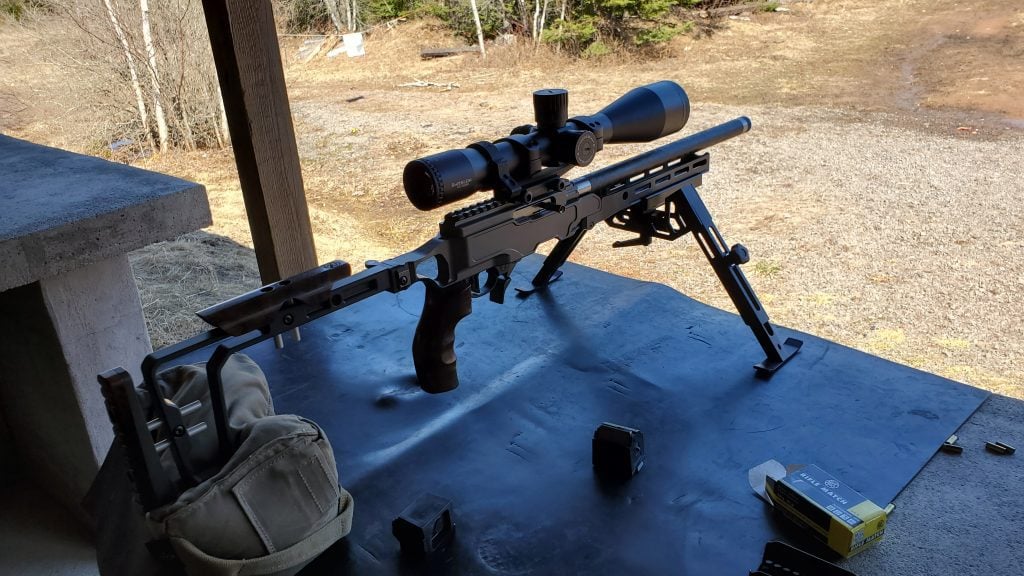
Now on to the fun part. I keep seeing American friends and other people ask where to get these rifles and parts in the states. Up until now, the rifles had to have loads of paperwork done on them, the sun and moon had to properly align, and then it finally got into the states.
Well, Grey Birch Manufacturing will be doing the big move south of the border to one of the freest (that word looks odd to write) states—Florida—so expect these things to be readily available over the next year. We are excited to see where Grey Birch Manufacturing goes as they continue to release new products in the rimfire world like a stock for the 10/22 Takedown, Tikka T1 or the CZ 457, or even their rumored 10/22 trigger group they are working on.

